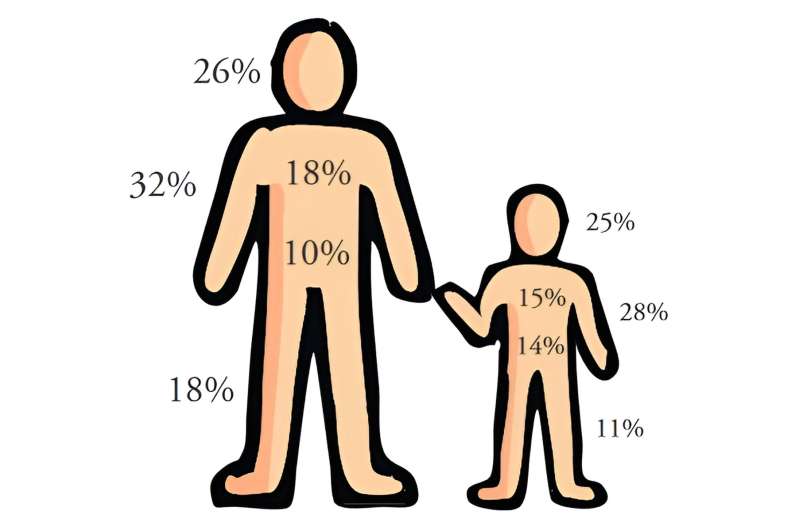This article has been reviewed according to Science X's editorial process and policies. Editors have highlighted the following attributes while ensuring the content's credibility:
fact-checked
trusted source
proofread
Arm and head injuries most common in wartime civilians, report finds

Arm and head injuries are the most common in wartime civilians, both children and adults. This is according to a report from the newly established Center for Disaster Medicine at the University of Gothenburg.
The report, titled "Civilian Injury Landscape in War," was commissioned by the National Board of Health and Welfare and is in Swedish with an English summary. The aim behind it has been to create a better knowledge base for work on contingency planning in Swedish health care and for the rebuilding of civil defense in Sweden.
The researchers conducted a systematic literature review, describing civilian injury patterns in modern warfare from 1973 to 2023. From all the material collected, 62 scientific articles and reports were ultimately included in the review.
The results show that arm injuries were the most common among civilians in war, affecting around one in three injured people (32%). This was followed by head injuries (26%), injuries to the lower extremities, i.e. the legs (18%), chest injuries (18%), burns (16%), abdominal and pelvic injuries (10%) and spinal injuries (4%).
Blast waves and unexploded ammunition
The high number of head injuries can be explained by blast waves from bombs that cause civilians to be thrown against walls or have debris propelled at them. Arm and finger injuries in children often involve playing with unexploded ammunition.
Abdominal, chest and leg injuries, for example from mine blasts, are often fatal for civilians without body armor. It should also be noted that if they are injured and die, and therefore do not enter the health care system, the injuries are not recorded.
The task included studying any differences between adults and children. The distribution of injuries in children was found to be about the same as in adults. Every fourth person in the sample was a child under the age of 17.
Yohan Robinson, associate professor and director of the Center for Disaster Medicine at the University of Gothenburg, is an orthopedic and trauma surgeon with experience as an officer and war surgeon in Afghanistan and Mali.
Important for civil and military health care
"Injury pattern data is important for contingency planning for both civilian and military medical services in the total defense system. We were actually surprised that the injury pattern has remained so constant over the last 50 years, despite different conflicts, geographical spread, the different nature of the wars and the many new weapon systems that have emerged," he states.
The report is based on data from armed conflicts, although chemical, biological and nuclear weapons have been excluded from the review. Difficulties encountered in the work have included the variation in how injuries are reported, and finding reliable data from ongoing conflicts in places like Niger, Sudan and Ukraine.
"One should be cautious about generalizing the injury pattern to a Swedish context, not least because there are limitations in the material, such as reporting bias, observation of the injury pattern for survivors only, and conflicts of interest in the results," says Yohan Robinson.



















